
Elegant golden jumping spider
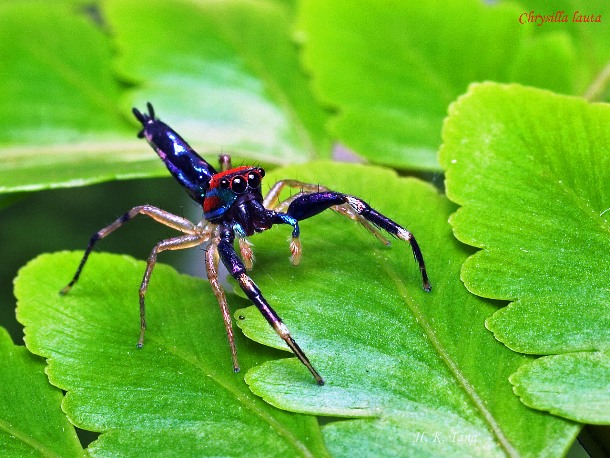 peckhamia.com
peckhamia.com Found in Southeast Asia, this jumping spider species is noted for its long abdomen, long first pair of legs and unique coloration. Males usually reach just about 0.3 inch in length, females are slightly larger.
Bird dung crab spider
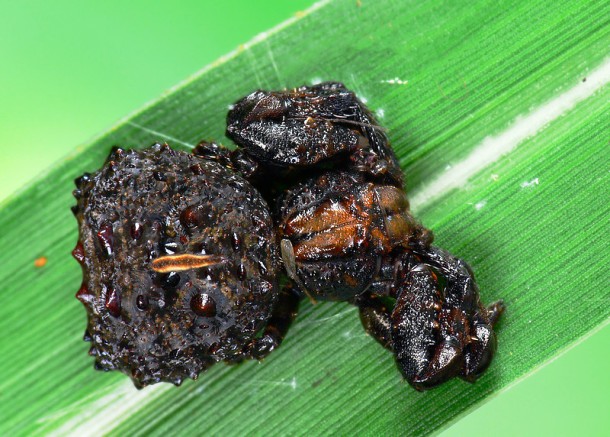 www.clubsnap.com
www.clubsnap.com This spider is notable for its unique way of camouflage. Its body is covered with blobs and warts that give it the look of a piece of fresh bird excrement. The spider reinforces the simulation of bird-droppings by drawing its legs close to the body and lying motionless on a leaf for long hours.
Spiny orb weaver
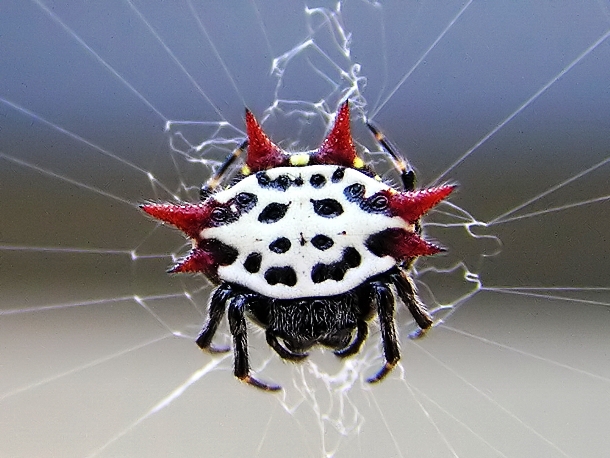 skeptoid.com
skeptoid.com This spider got his name due to the prominent spines on its abdomen. Reaching over 1 inch in diameter (measured from spike to spike), these spiders are generally harmless to humans.
Smiling spider
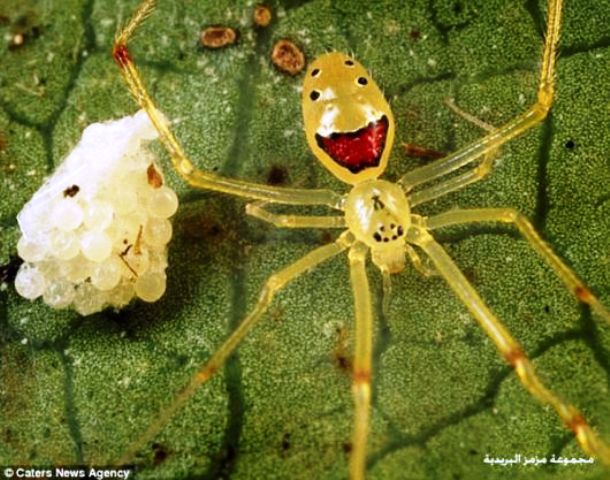 videoimagesartcles.blogspot.com
videoimagesartcles.blogspot.com The 0.20 inch long spider has a pattern uncannily resembling a smiley face on their yellow body. Smiling spider is endemic to Oahu, Molokai, Maui and the island of Hawaii where it lives in rainforests at elevations of 1000 – 6,500 feet.
Diving bell spider
 www.bbc.co.uk
www.bbc.co.uk Commonly known as water spider, this spider species is the only one known to spend his entire life under water. As with other spiders, it breathes air, which it traps in a bubble held by hairs on its abdomen and legs. Males are around 30% larger than females, which is unusual for spiders.
Himalayan jumping spider
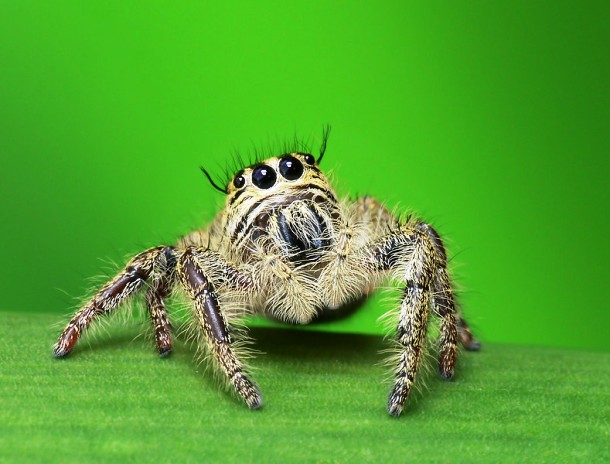 djurblogg.nu
djurblogg.nu The Himalayan jumping spider is a tiny spider that lives high up in the Himalayas, and has been found at altitudes as high as 22,000 feet above sea level. Its only source of food at these extreme heights is stray insects that are blown up the mountainside by the wind.
Arrowhead spider
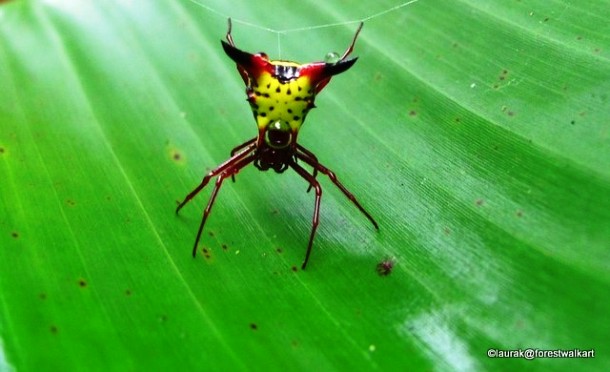 forestwalkart.blogspot.com
forestwalkart.blogspot.com The arrowhead spider is a brightly colored arachnid whose leg span is barely 1 inch. These tiny creatures, absolutely harmless to humans, can be found during the spring, summer, and fall. They lurk around low shrubs at approximately 2 to 3 feet above ground in wooded thickets, wetlands, gardens and marsh areas.
Wasp spider
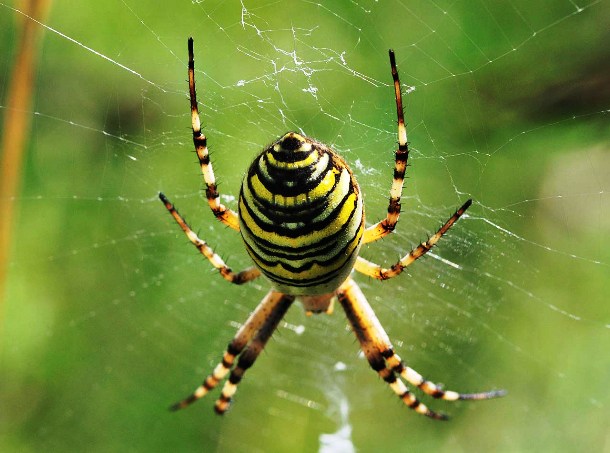 www.thamesvalleybirds.co.uk
www.thamesvalleybirds.co.uk This spider is, like all orb-weavers, not poisonous. Wasp spiders weave their webs between grass at a height of up to a foot. Adult females are much larger than the males
Goliath bird eating spider
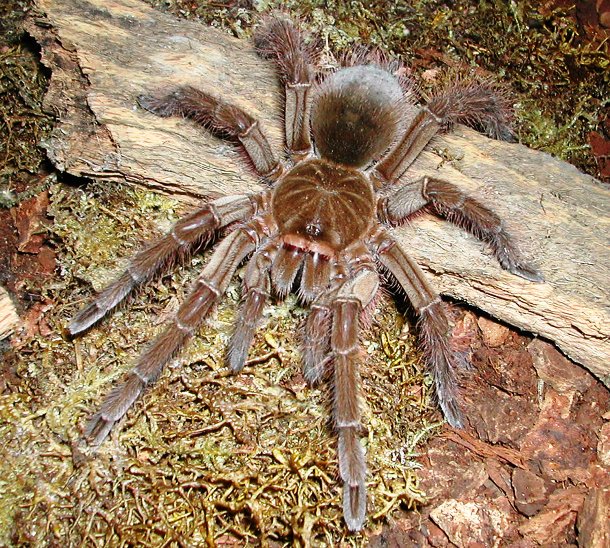 cooltarantulas.com
cooltarantulas.com After giant huntsman,the Goliath bird-eater is the world´s second largest spider by leg span and may by the largest by mass. Despite its name, the spider does not normally eat birds, it feeds on insects. It is venomous but the venom is relatively harmless and its effects are comparable to those of a wasp’s sting.
Green jumping spider
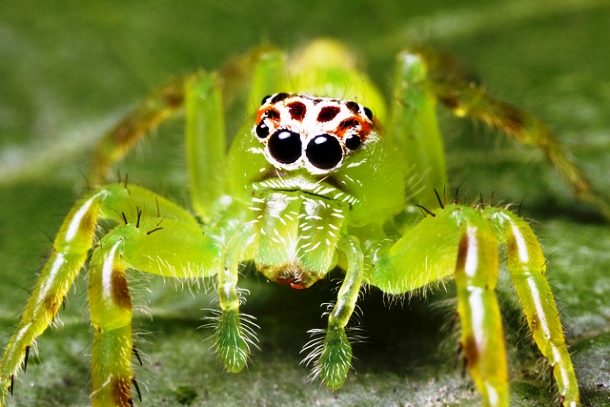 isolympia.com
isolympia.com Occurring in Queensland, New Guinea, New South Wales, the Northern Territory, and Western Australia, this species is one of the largest jumping spiders. The males are strikingly colored and decorated with long white “side whiskers”.
Writing spider
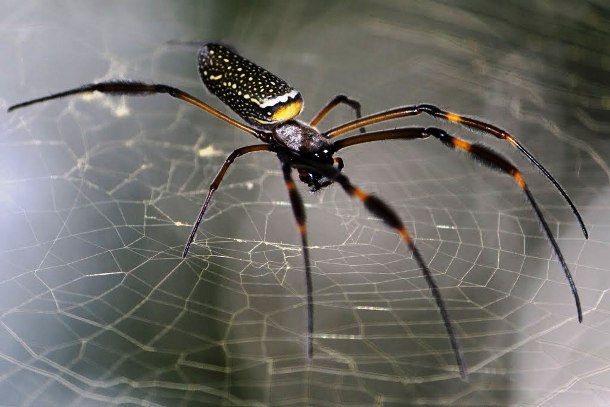 www.panoramio.com
www.panoramio.com Usually found in most of Central America and Antilles regions (ranging from Mexico to Panama), this species is distinguished by the bright, vibrating colors of the abdomen. Females are three to four times larger than males; their leg span can reach over 5 inches.
Ladybug mimic spider
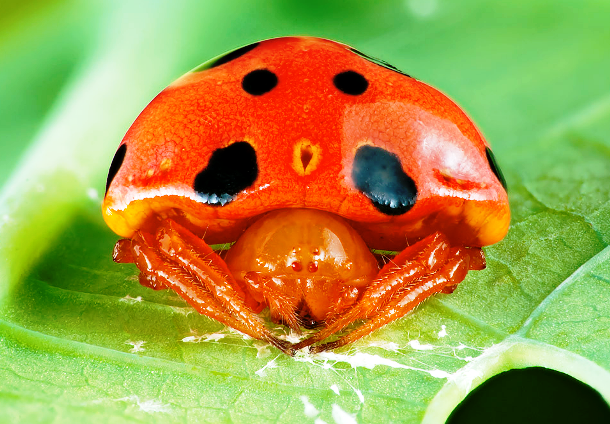 imgur.com
imgur.com It is suggested that the spiders mimic ladybugs because ladybugs do not taste very well and predators usually avoid them. Despite its adorable look, this little critter actually belongs to the same group as tarantulas and black widows.
Red-backed jumping spider
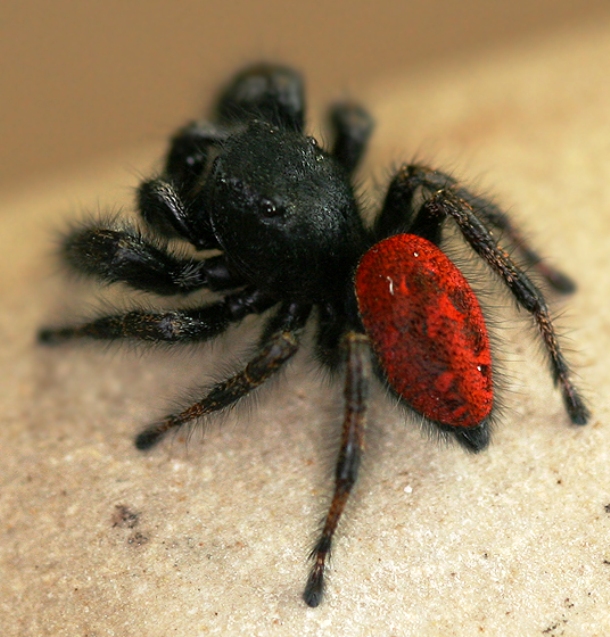 www.sodahead.com
www.sodahead.com Occupying relatively dry habitats such as coastal dunes or oak woodlands in western North America, red-backed jumping spider is one of the largest and most commonly encountered jumping spiders. This species constructs conspicuous tubular silken nests under rocks and wood on the ground and sometimes grape vines.
Trapdoor spider
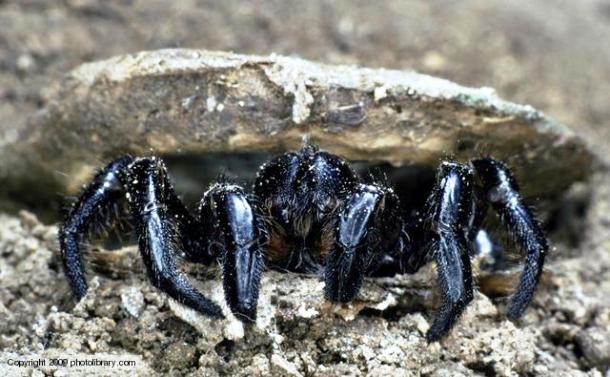 www.bbc.co.uk
www.bbc.co.uk Trapdoor spiders are notable for their unique hunting technique. These medium-sized mygalomorph spiders construct burrows with a cork-like trapdoor made of soil, vegetation and silk and then wait halfway outside of the burrow for their pray.
Heavy jumping spider
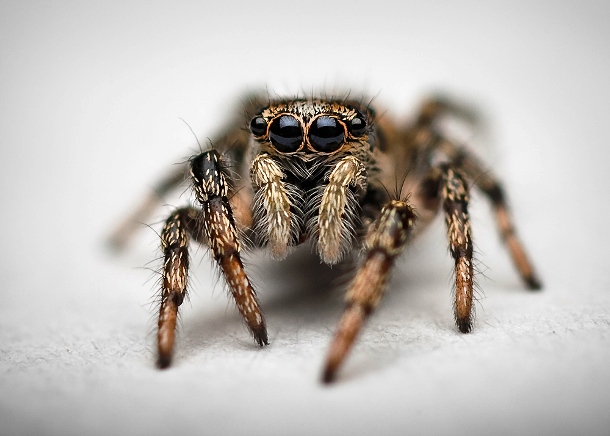 paulduann.com
paulduann.com Like other jumping spiders, this species does not build a web. Instead, it hunts on the move, attaching a silken line to a support before ‘bungee jumping’ onto suitable prey. Heavy jumping spider reaches about 0.5 inch in body length.
Peacock spider
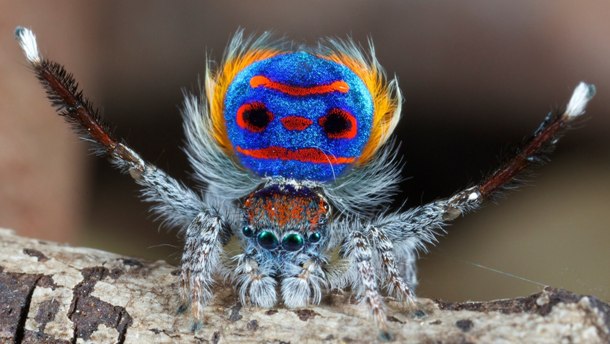 www.youtube.com
www.youtube.com Confined just to specific parts of Australia, this spider species is one of the most colorful and bright. The red, blue and black colored males have flap-like extensions of the abdomen with white hairs that can be folded down. They use them for display during mating.
Ogre – faced spider
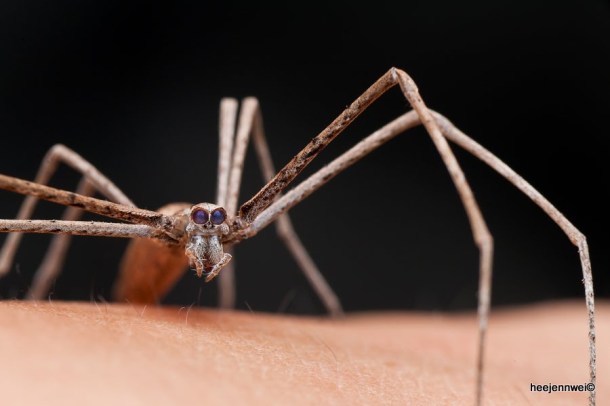 heejennwei.blogspot.com
heejennwei.blogspot.com Distributed nearly worldwide in the tropics, these spiders got their name due to the imagined similarity between their appearance and that of the mythological creature, the ogre. The spiders make webs that they suspend between the front legs and when prey approaches, they will stretch the net to two or three times its relaxed size and propel it onto the prey.
Tree stump spider
 melvynyeo.deviantart.com
melvynyeo.deviantart.com Found in South America, this spider species is noted for its unusually shaped abdomen which looks like a sprouting branch. This feature is probably used as either a hunting technique or to hide from predators.
Ant – mimic jumping spider
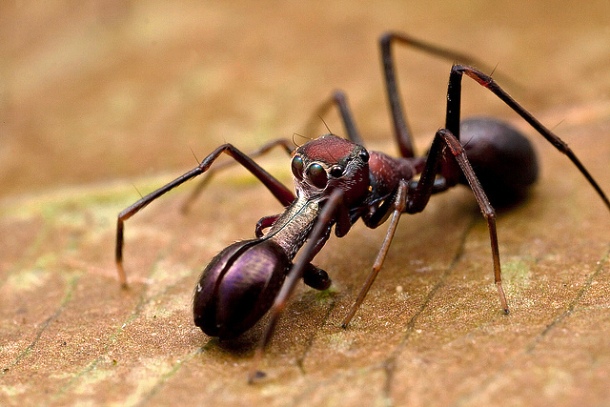 www.flickr.com
www.flickr.com Ant-mimicking spiders mainly occur in the tropics from Africa to Australia, with some species found in the New World. Their colors vary from black to yellow, depending on the mimicked ant species. One African species was observed to mimic one ant species when immature, and another one as an adult.
Long-horned orb-weaver
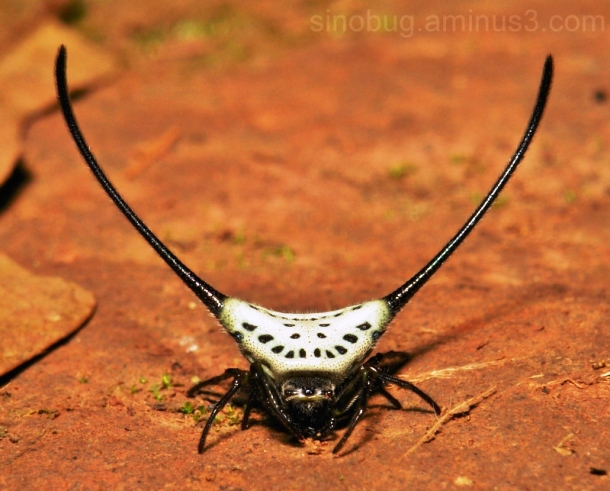 sinobug.aminus3.com
sinobug.aminus3.com Orb-weaving spiders are three-clawed builders of flat webs with sticky spiral capture silk. Usually, towards evening, the spider will consume the old web, rest for approximately an hour, and then spin a new web in the same location.
Australian garden orb weaver
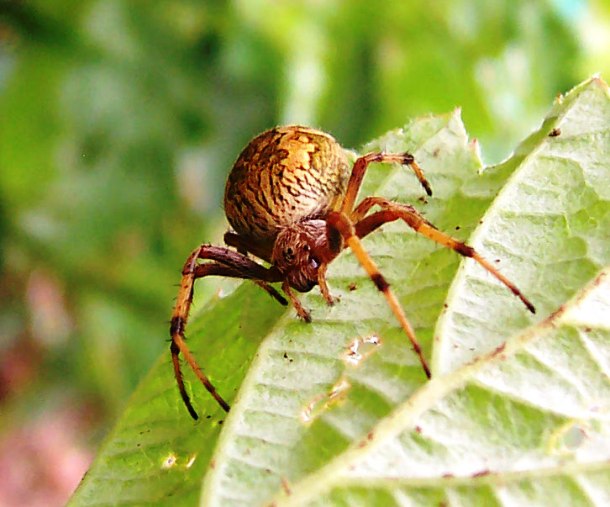 en.wikipedia.org
en.wikipedia.org Found across the coastal regions of the eastern states of Australia, these spiders are notable for their ability to change their color with each moult to better match the background upon which they rest during the day.
Wide – jawed viciria
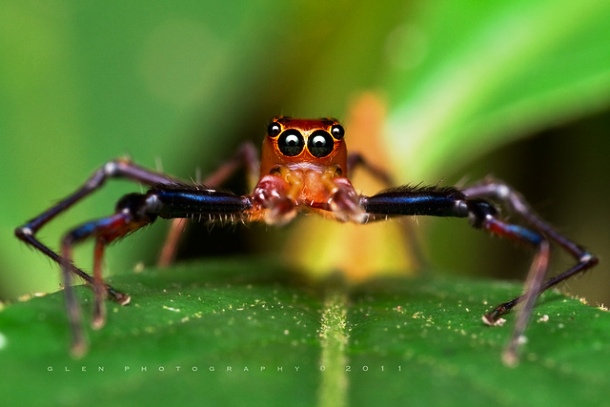 www.flickr.com
www.flickr.com This spider lives in garden foliages and wastelands of Singapore and Indonesia. Both sexes reach a length of about 0.3 – 0.5 inch. Viciria is a colorful genus of the jumping spider family.
Sequined spider
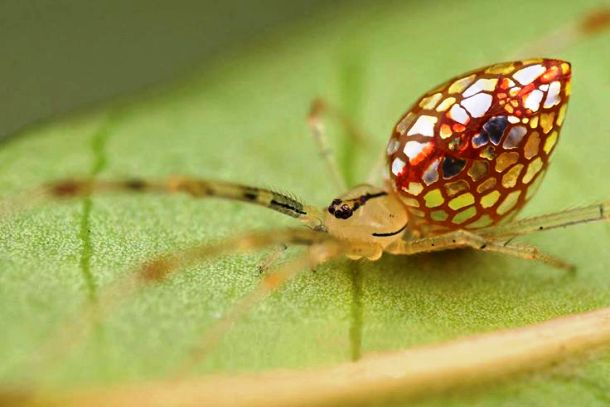 www.pinterest.com
www.pinterest.com Also known as Australian stained-glass mirror spider, this arachnid can be found in all Australian states. These spiders are among the smallest species with just 0.12 in body length for males and 0.16 in for females.
Eight-spotted crab spider
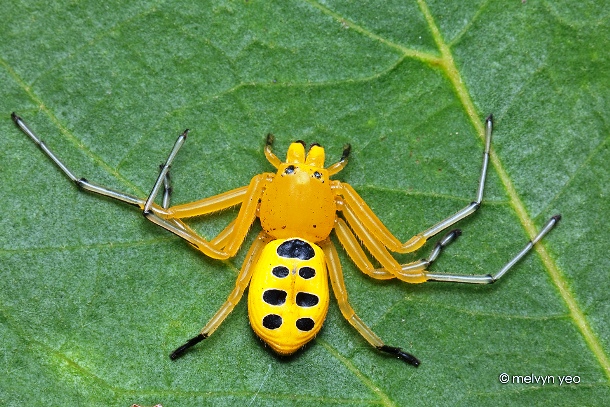 melvynyeo.deviantart.com
melvynyeo.deviantart.com Discovered in Singapore in 1924, this spider species is one of the most colorful . At about 1 inch long body, it is also one of the largest types of crab spiders.
Regal jumping spider
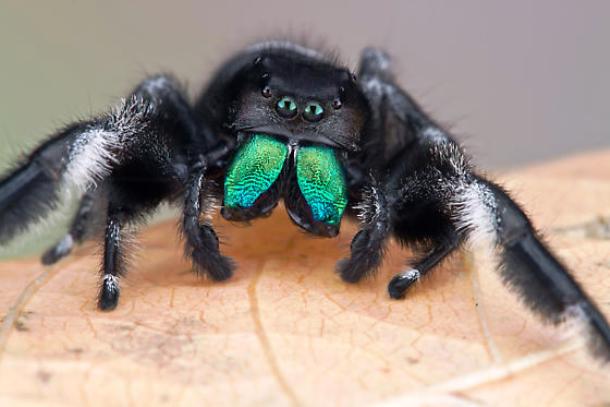 bugguide.ne
bugguide.ne With adult males averaging 0.5 inch and females about 0.6 inch in length, regal jumping spiders are the largest jumping spiders in eastern North America. Males and females are easily differentiated. The males are always black with a pattern of white spots and stripes. Females often bear similar patterns, but range in color from shades of gray to vivid orange.
If you enjoyed these 25 adorable spiders, be sure to check out25 Of The Most Bizarre Animals You’ve Ever Heard Of Before.



























